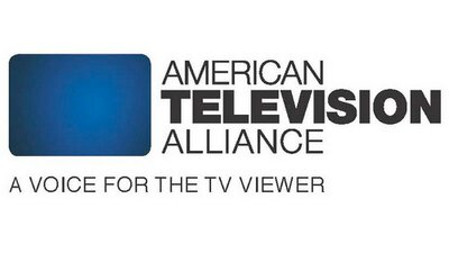Pay-TV, Consumer Groups Slam ATSC 3.0 Proposal
WASHINGTON—An alliance of pay-TV operators and consumer groups this week claimed that the Next Gen TV standards (aka ATSC 3.0) will “force” consumers to purchase new TV sets, adding that proposed rules that would require broadcasters to simulcast ATSC 1.0 won’t prevent viewers from losing access to free over-the-air TV.

Echoing recent comments from FCC Commissioner Jessica Rosenworcel, who last week made the same claims, the American Television Alliance, a coalition of cable networks and MVPDs including Mediacom, Dish, Charter, AT&T and Verizon, along with consumer advocacy groups New America Foundation and Taxpayer Protection Alliance, voiced their criticisms in comments filed with the FCC this week. The group claimed that although broadcasters proposed voluntary adoption of the standard, safeguards such as a “lighthouse” station arrangement—in which stations in certain markets would share responsibilities for ensuring the continued broadcasting of the current DTV standard—are not enough.
‘DEVIL IS GOING TO BE IN THE DETAILS’
Michael Nilsson, outside counsel for the ATVA, said broadcasters have changed their tune since the FCC took up the proposed standard more than six months ago. “As the proceeding went on, some of the broadcasters, including some of the well-known proponents of it, backed away from that [simulcasting] commitment,” Nilsson said in a phone press conference Thursday. “They said ‘well simulcasting is sort of a nice thing, but we shouldn’t have to do it where simulcasting is impractical or impossible.’ Assuming that there is a simulcast requirement, the devil is going to be in the details to determine how effective that requirement is.”
Nilsson also warned that such simulcasting may not be in HD. “If today a broadcaster is showing a football game in high-def but the simulcast is in standard definition, I think people are going to be unhappy, and they’re going to have a right to be unhappy.”
Retransmission is also a concern, with Nilsson advocating a separate set of negotiations for ATSC 3.0 transmissions to protect viewers from threatened blackouts in which broadcasters pull their signals from pay-TV systems. “We think the right way for the rules to work is for first time carriers of these new signals to be negotiated separately,” Nilsson said. “That way if the signals have market value… pay TV providers are going to want to carry them and they’re going to want to pay for them,” adding that the lack of such protection could lead to pay TV viewers losing access to marquee events such as the Super Bowl or the World Series. “That to us doesn’t sound voluntary and broadcasters have always said that this is supposed to be a voluntary transition for everybody.”
PUBLIC INTEREST
Get the TV Tech Newsletter
The professional video industry's #1 source for news, trends and product and tech information. Sign up below.
Representing the New America Foundation, Michael Calabrese said that even after last spring’s spectrum auctions, broadcasters are still sitting on billions of dollars worth of spectrum and questioned whether the new standard will fit in with broadcasters’ public interest obligations.
“Less than one-third of the TV band was just auctioned this year and that raised $20 billion dollars, and so they continue to operate on spectrum worth more than $40 billion dollars and unlike the mobile carriers, who they seek to compete with, they did not pay for their spectrum,” he said. “If they want to switch their business model, there should be an auction.” He also added that “we don’t believe the FCC at this time should authorize a permanent transition that gives local stations the option to stop broadcasting the current DTV standard.”
Calabrese also said that the Sinclair Broadcast Group, a strong advocate for ATSC 3.0, will be the biggest beneficiary of the Next Gen TV standard because of its patent royalties and voiced concern that the FCC is considering the proposed adoption while at the same time considering loosening media ownership rules.
“It's very troubling to us that the FCC is rushing this order through with little debate and few protections for consumers, and that's particularly true because it's being rushed along in parallel with broadcast ownership deregulation,” Calabrese said. “In other words, the elimination of limits on broadcast ownership, which permits Sinclair-Tribune to qualify, and also no action at all on insuring good faith bargaining on retransmission consent fees. And if you add this on top of patent royalties from the entire industry, including from the MVPDs, as well as with Tribune in their stable, [it gives them] far more leverage in retransmission negotiations.”
BACKWARD COMPATIBILITY
The lack of backward compatibility with current TV sets was also raised, as the groups claimed that viewers would need to purchase new sets or equipment in order to receive ATSC 3.0 over the air.
“Broadcasting groups have been talking a great game about this standard, and we've been repeatedly promised that we'll have improvements in viewing quality, over-the-air broadcasting, targeted advertising, and accessibility features for emergency services,” said Ross Marchand with the Tax Payer Protection Alliance. “Now these features may turn out to be as great as they've been trumped up to be but whether it's technology, telecom, or even healthcare, quality improvements never quite happen in response to complicated onerous mandates from Washington, and that's exactly what we're getting with those purposed standards.”
Noting the increase in cord cutting and subsequent rise on viewers accessing free over-the-air television, Marchand noted that many of these households are lower income and that even spending a nominal fee for equipment to access ATSC 3.0 could be onerous.
“Now $50 or so for new equipment may not seem like much to most people, but when you're living from paycheck to paycheck. these out-of-pocket costs get in the way of putting food on the table or paying for gas to go to work and as taxpayers, customers are going have to bear the brunt of even more costs,” Marchand said. “Taxpayers will be forced to fork over millions upon millions of dollars for TV broadcasting they're already paying for in their own household, and in addition, the cost from public broadcasters like PBS could prove to be astronomical.”
Dennis Wharton, spokesman for the NAB responded to ATVA’s warning. “If a consumer buys a dongle/converter box [rather than buying a new Next Gen TV set] that should enable reception of Ultra HD, targeted local ads, and other advancements,” Wharton said. “The only thing you would not receive with a dongle/box would be the emergency alerting feature that ‘wakes up’ a TV when there's a tornado coming through town.
“No consumer will be ‘forced’ to buy a new TV set,” he added, “but we think that over a certain number of years, OTA-reliant consumers will replace existing TV sets with Next Gen sets [just as consumers replace existing cars and cellphones with newer models].”
For a comprehensive list of TV Technology’s ATSC 3.0 coverage, see our ATSC3 silo.
Tom has covered the broadcast technology market for the past 25 years, including three years handling member communications for the National Association of Broadcasters followed by a year as editor of Video Technology News and DTV Business executive newsletters for Phillips Publishing. In 1999 he launched digitalbroadcasting.com for internet B2B portal Verticalnet. He is also a charter member of the CTA's Academy of Digital TV Pioneers. Since 2001, he has been editor-in-chief of TV Tech (www.tvtech.com), the leading source of news and information on broadcast and related media technology and is a frequent contributor and moderator to the brand’s Tech Leadership events.

